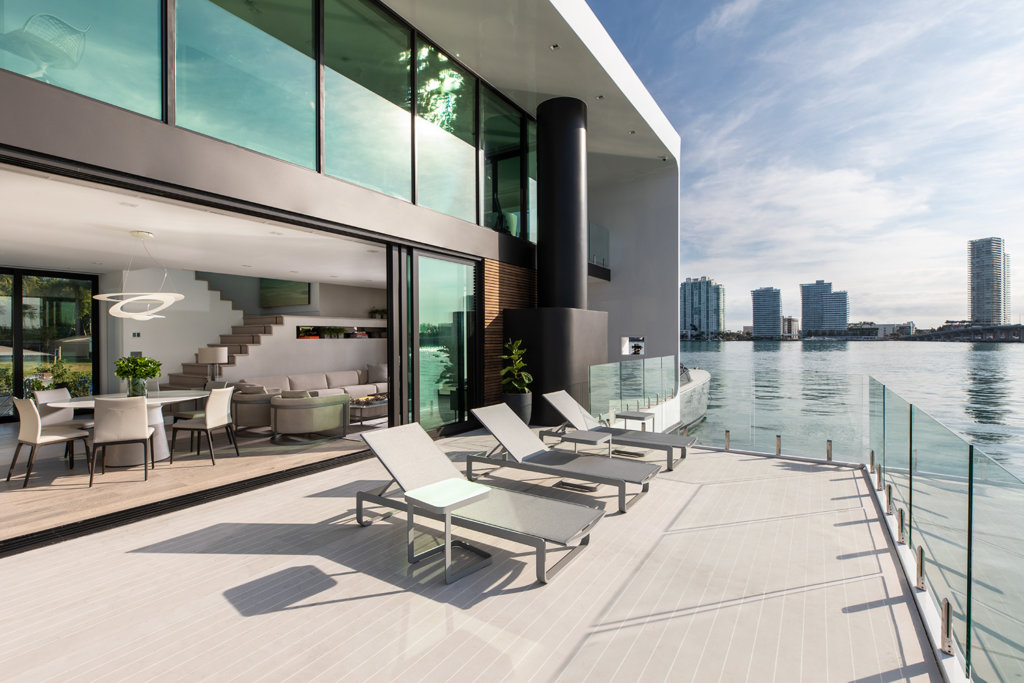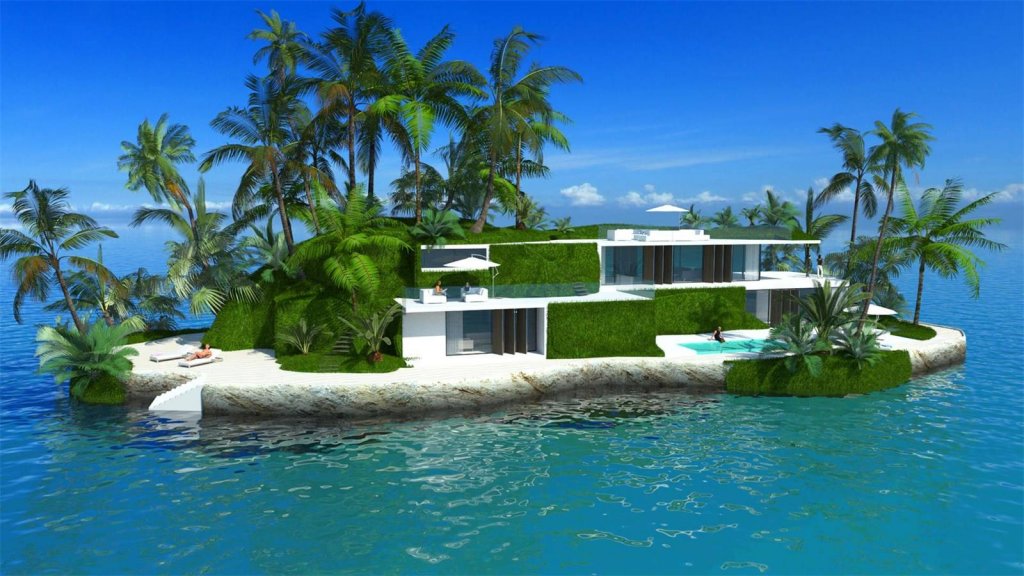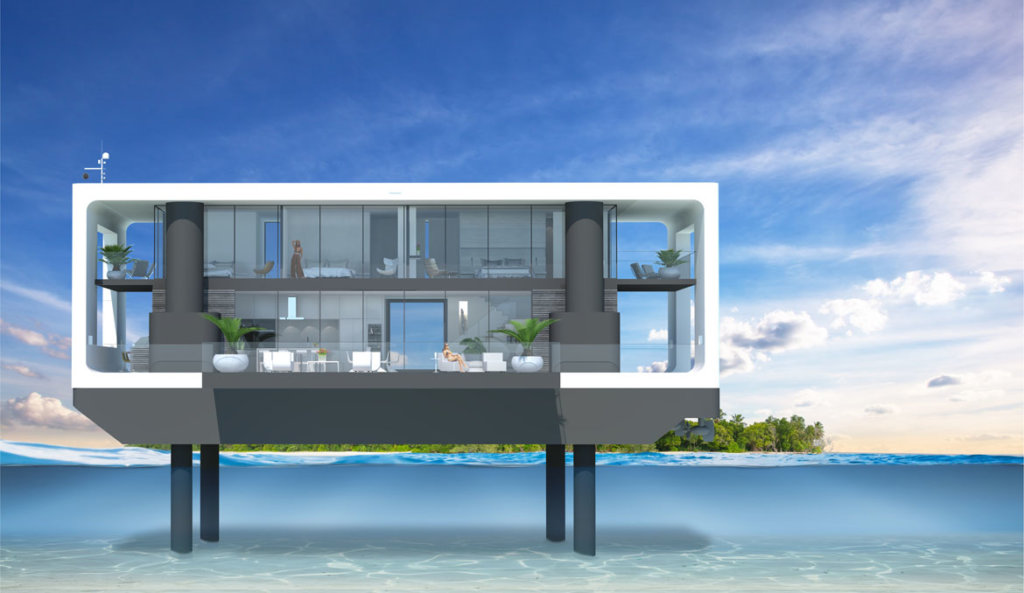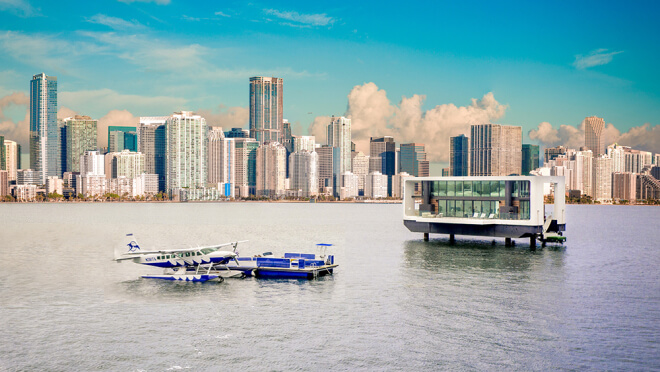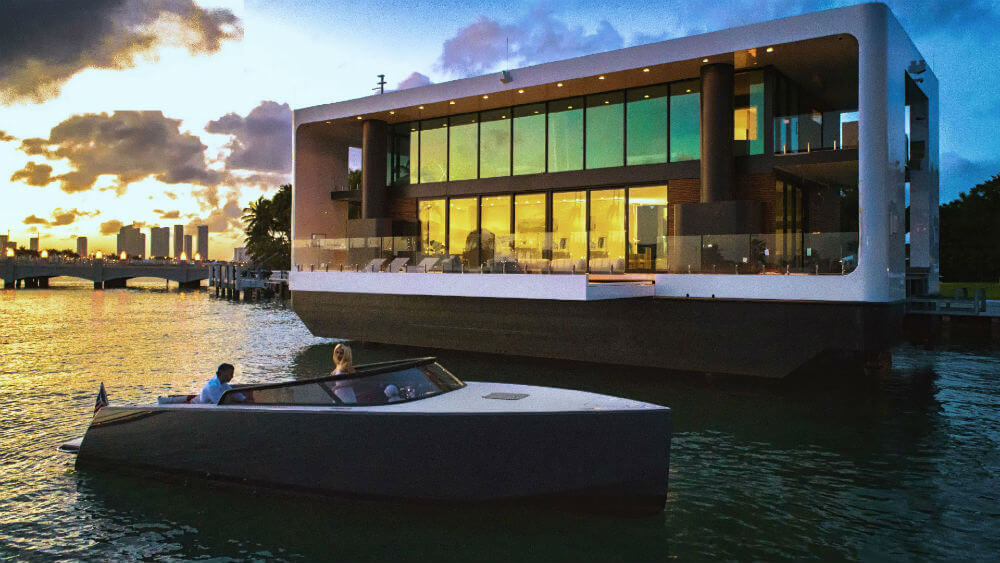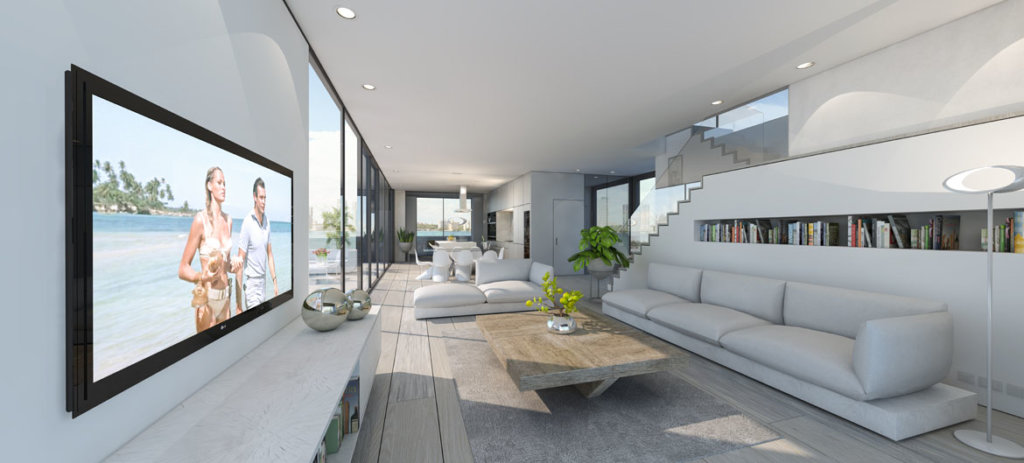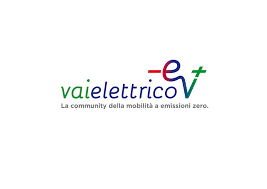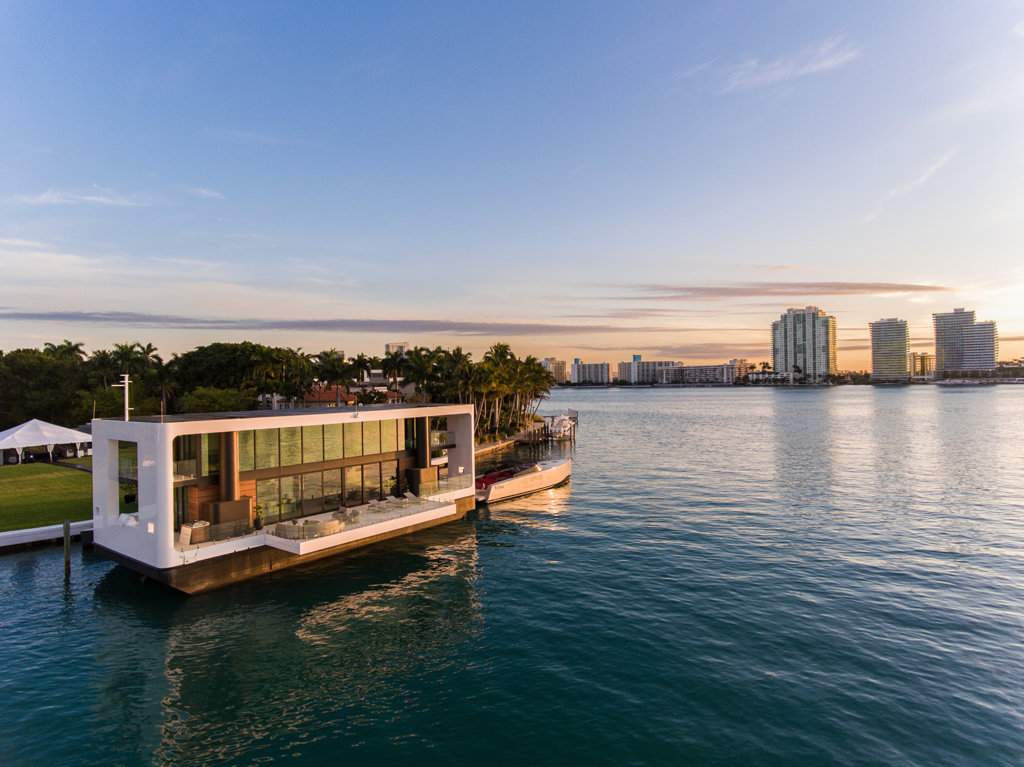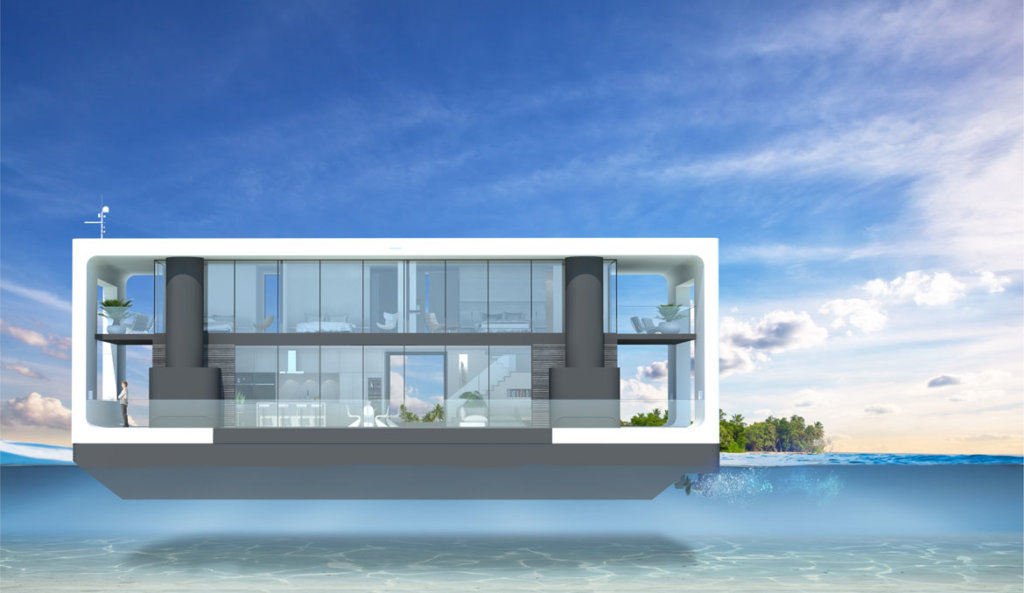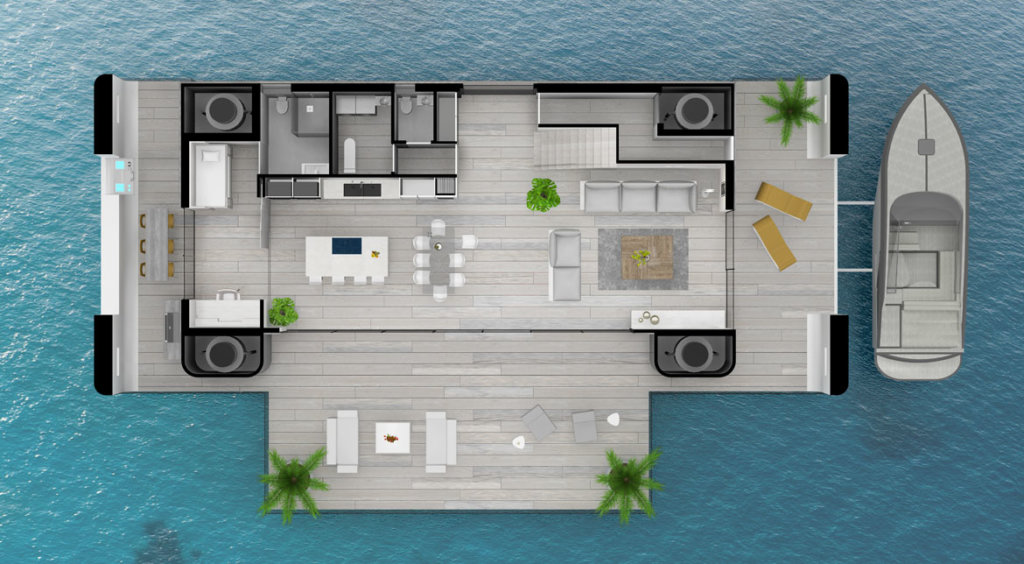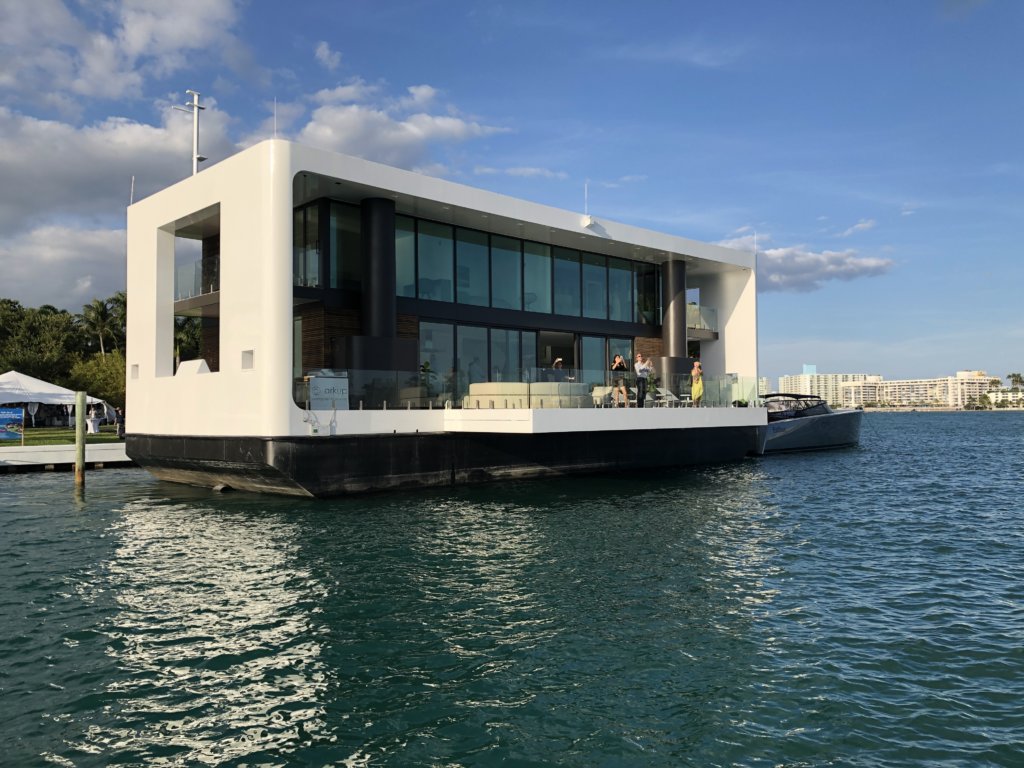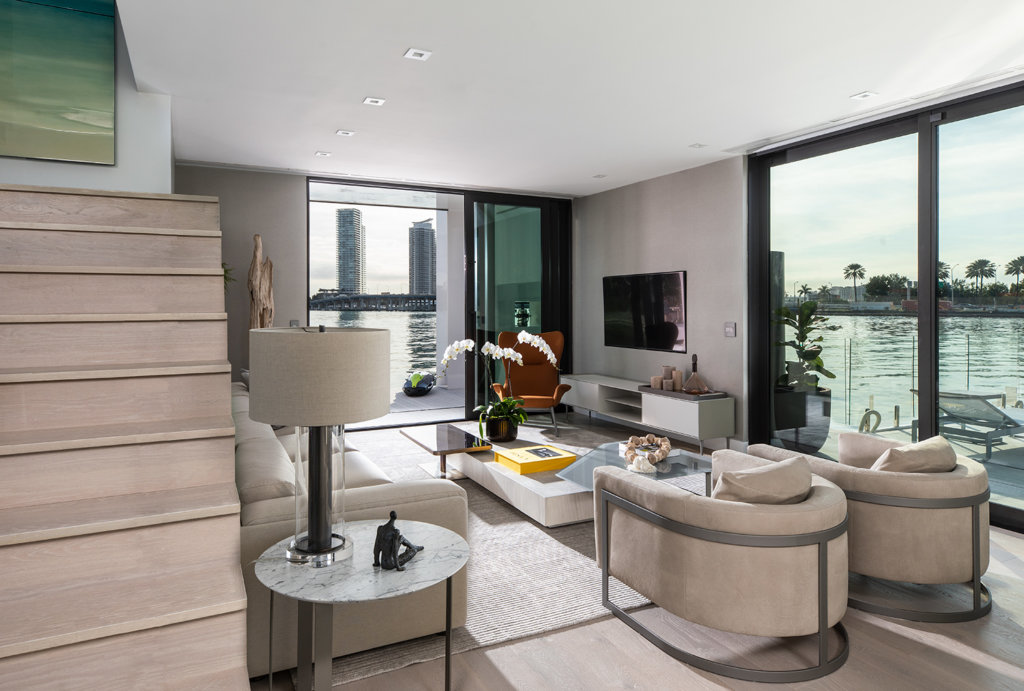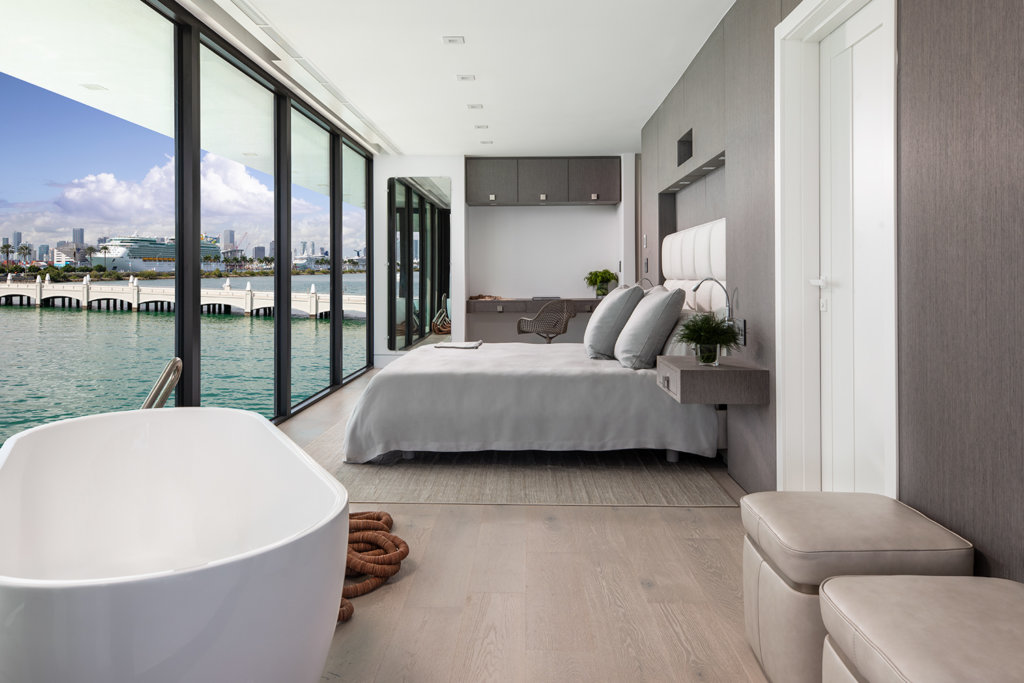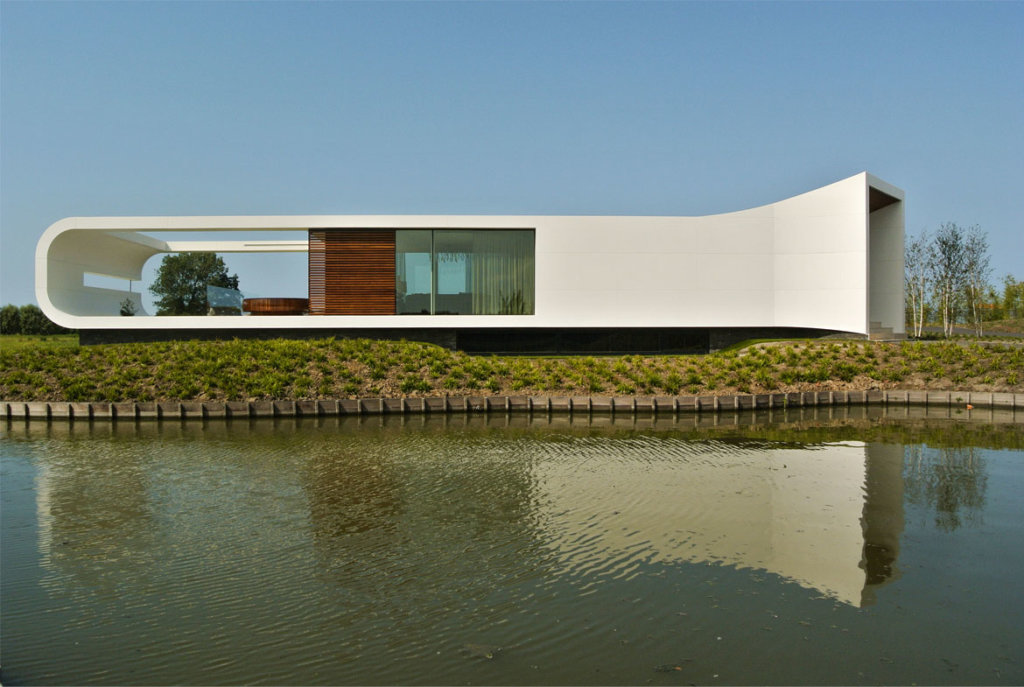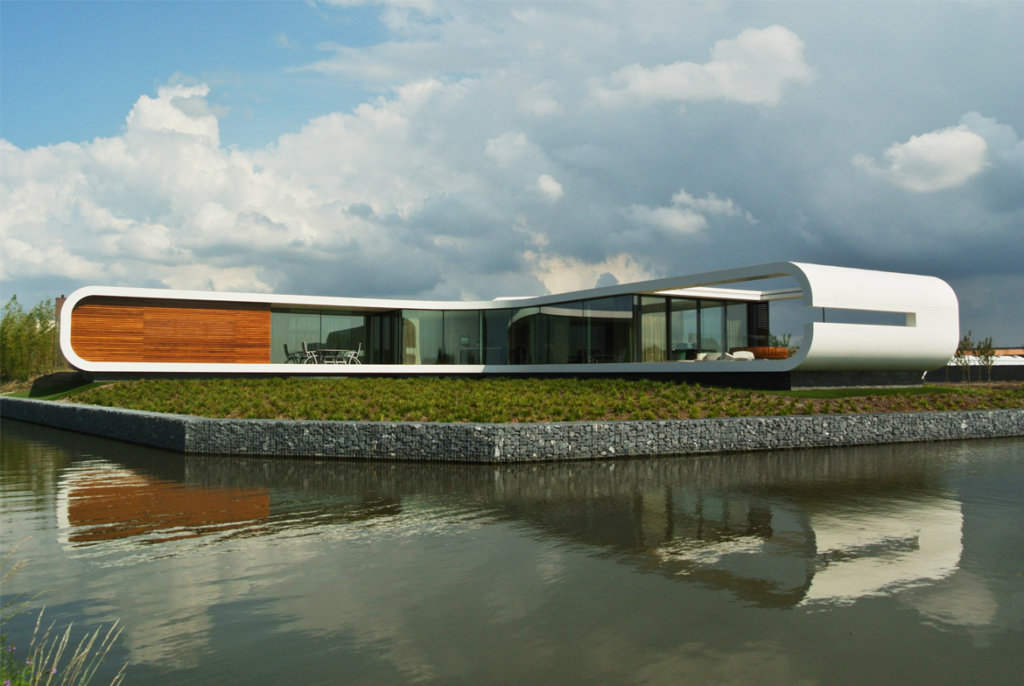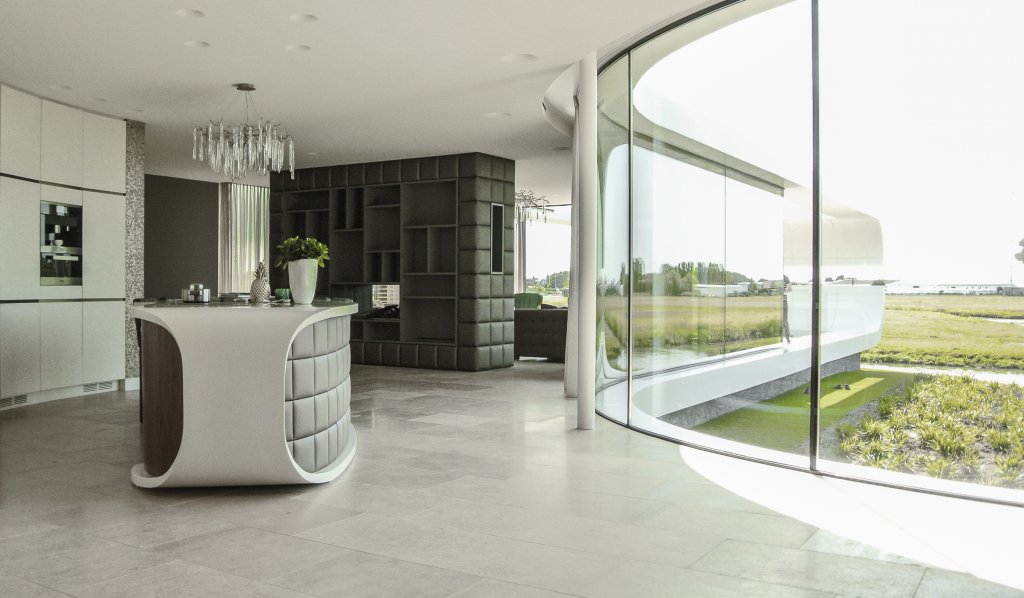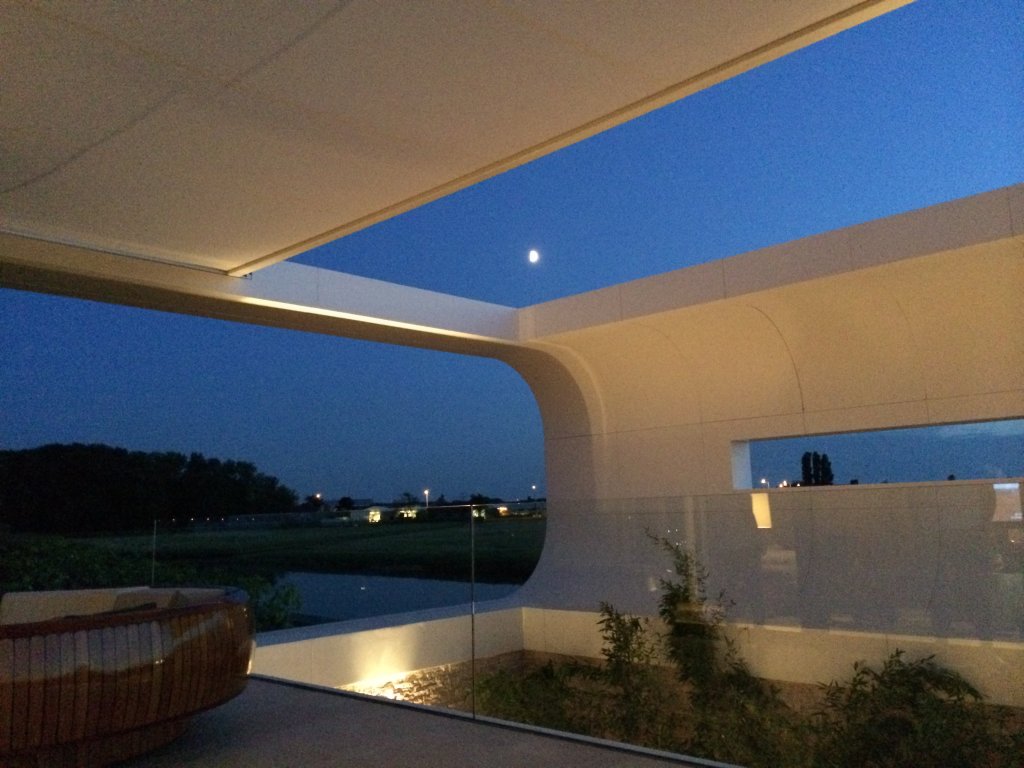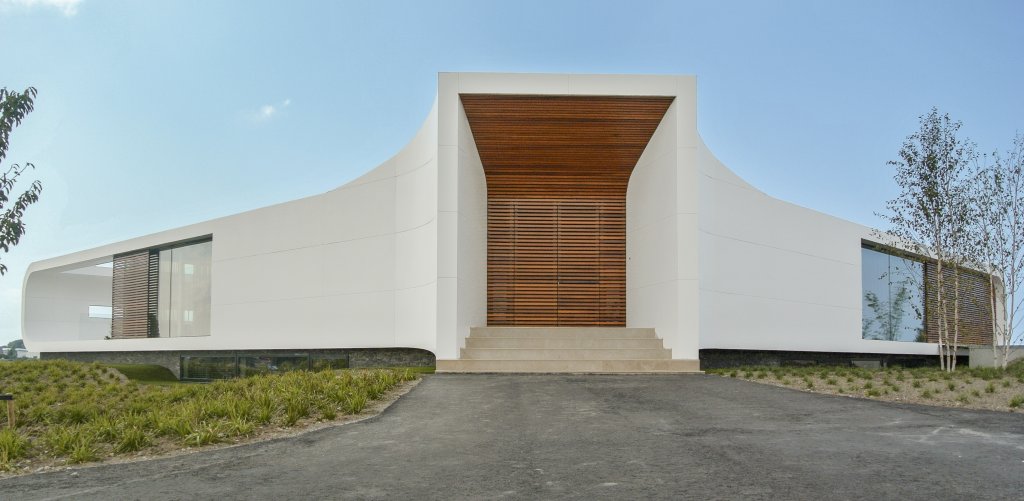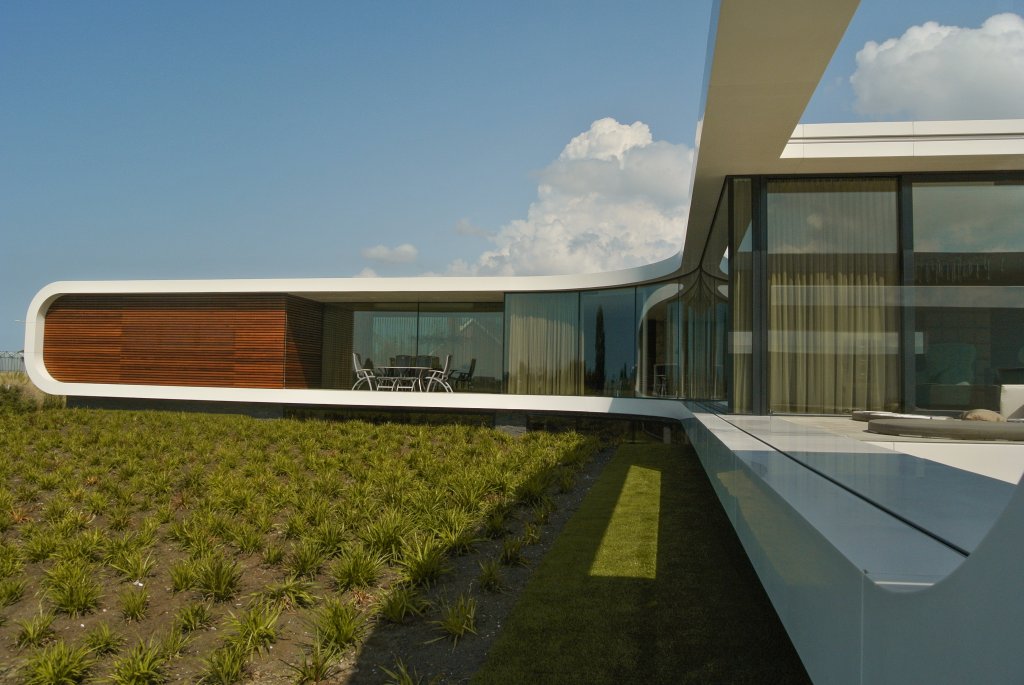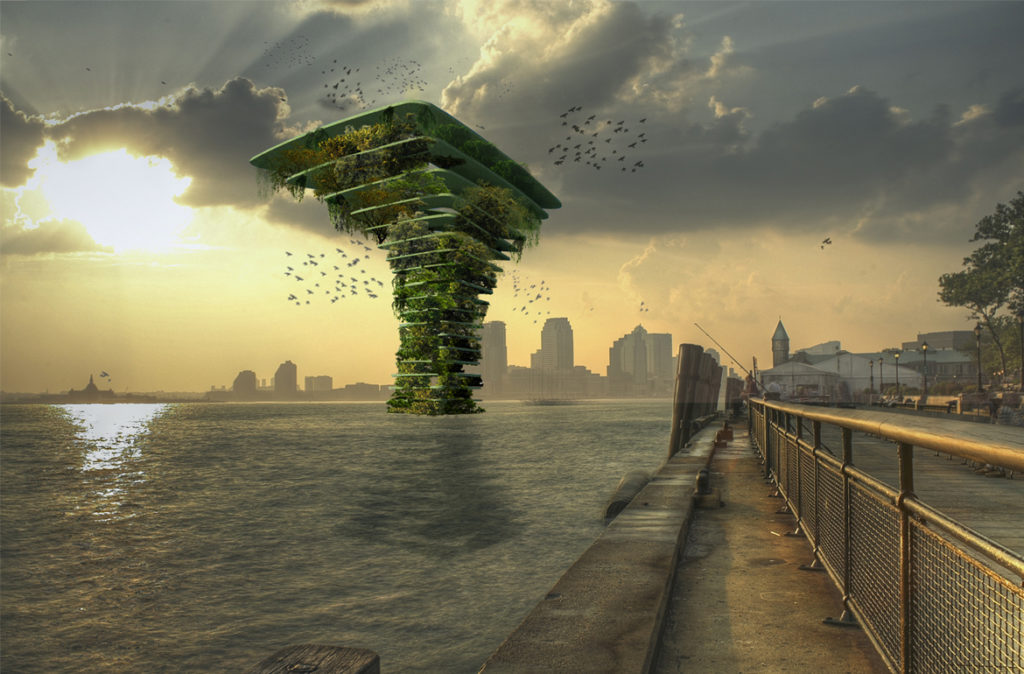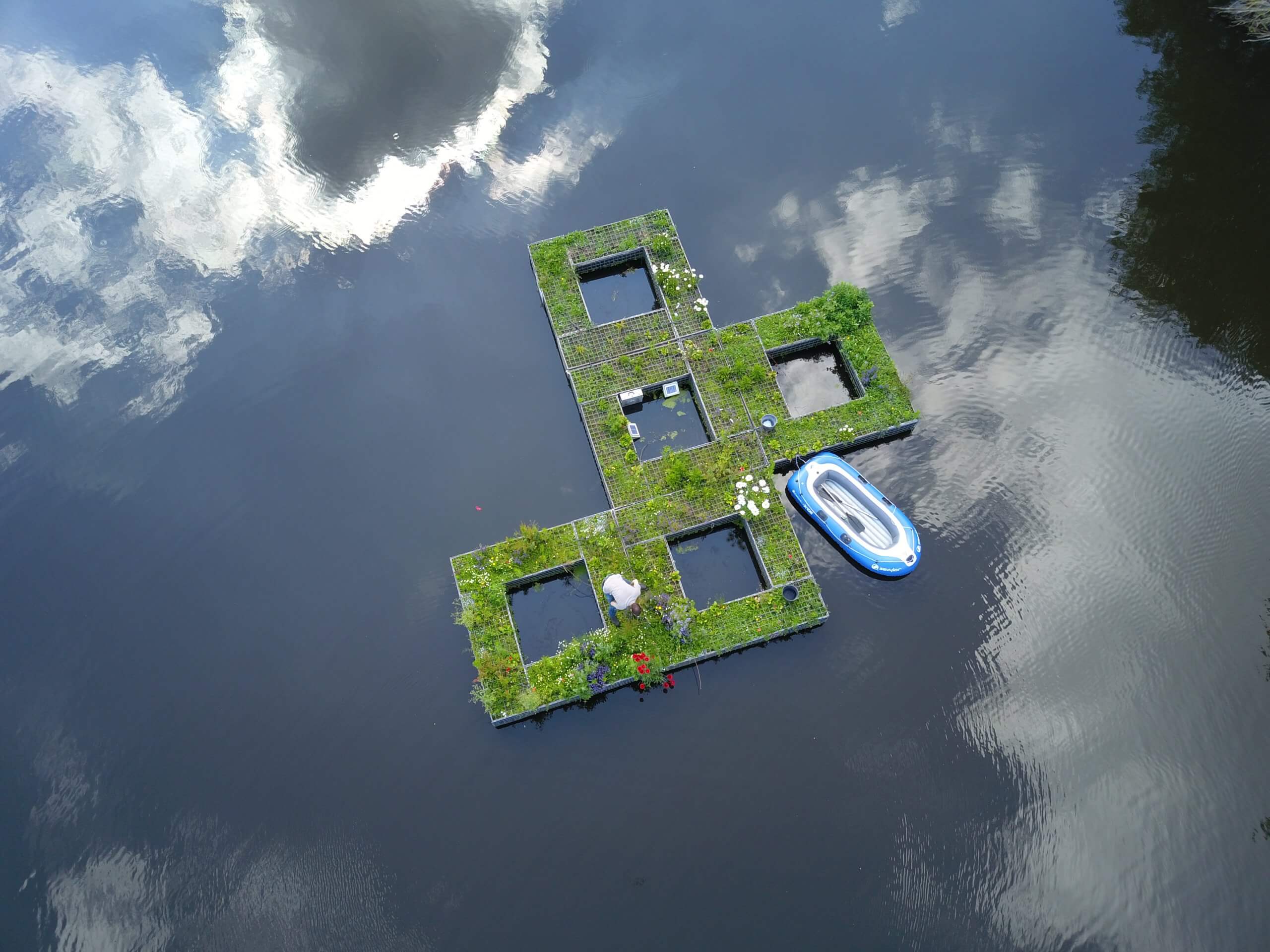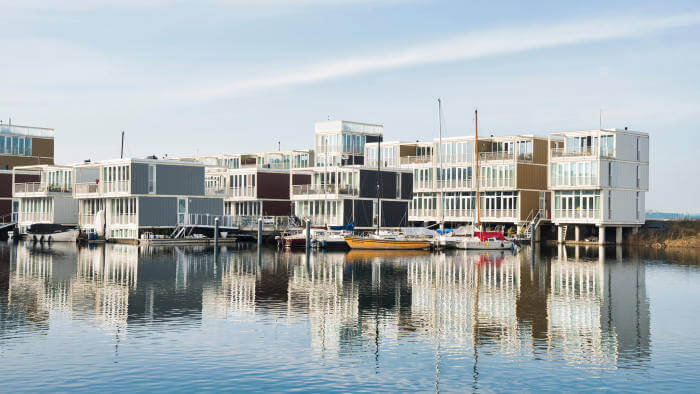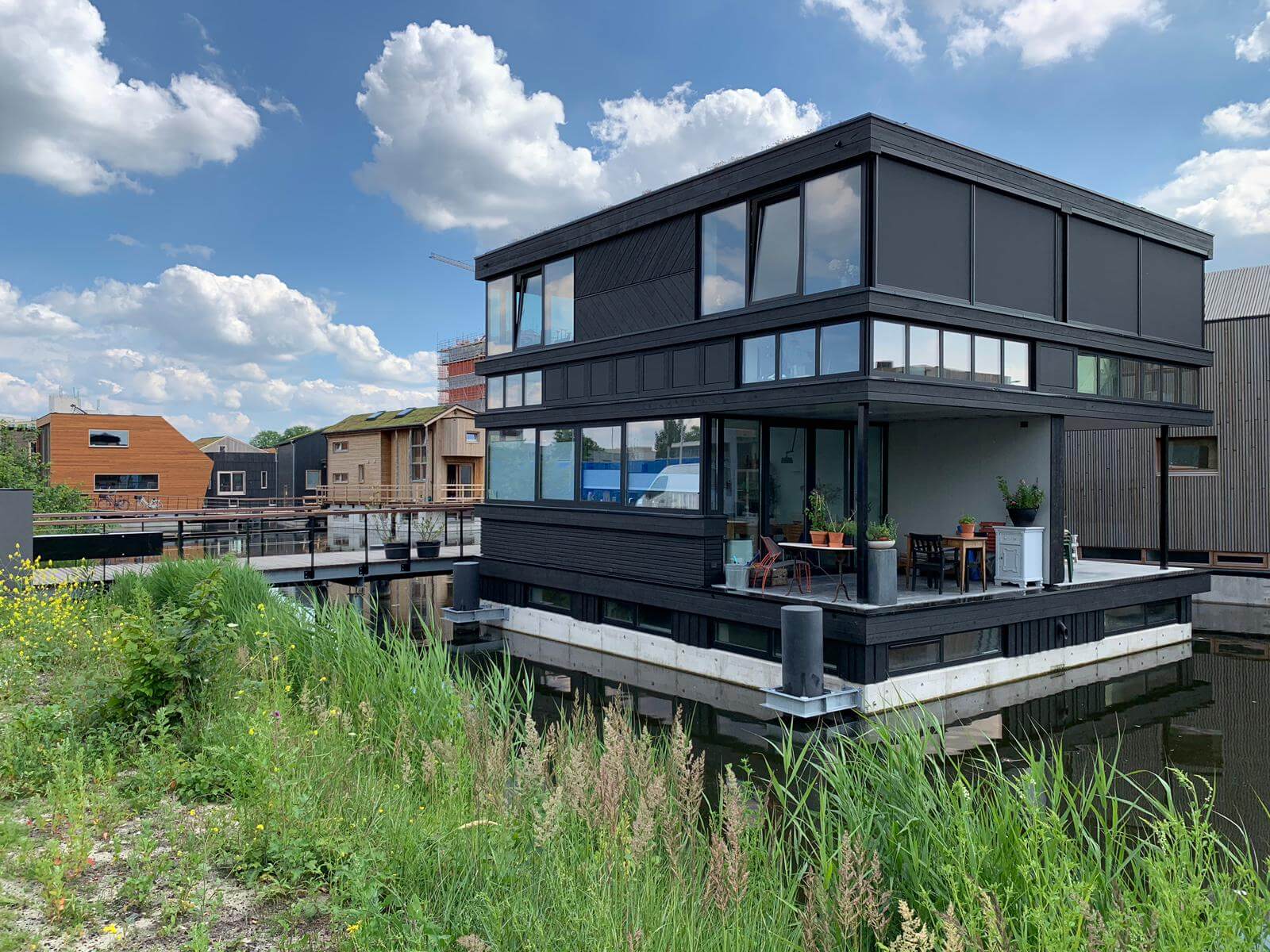Diez casas flotantes con una arquitectura y diseno únicos
By Cynthia Martin
Architectural Digest
2019.Sept.21
Una casa flotante no tiene por qué ser un sucedáneo de un barco. En los últimos años la arquitectura está apostando por integrar también sus diseños más arriesgados sobre estas construcciones acuáticas. Enumeramos diez tesoros repartidos por el mundo.
Se puede hablar de casas flotantes en general, pero el auge de este sector hace reflexionar sobre cómo está naciendo una auténtica arquitectura de este tipo de vivienda. Cada vez son más firmas las que se alejan del concepto básico de barco a la hora de diseñar un hogar sobre el medio acuático. En una tendencia cada vez más en auge, seleccionamos diez obras de arte únicas en el mundo.
1. Un pueblo flotante
Giancarlo Zemas Design Group creó Waternest 100 (arriba, en la foto de apertura) el pasado 2015, una casa flotante ecológica para EcoFloLife, un cliente cuyo sueño era crear un pequeño pueblo flotante. El lugar se llama Waternest Village, y está en Londres. Alló descansan cinco casas fijas conectadas a tierra por una pasarela y que buscan ser ejemplo de sostenibilidad y de aprovechamiento del medio.
Son 100 metros cuadrados construidos con madera laminada reciclada para las paredes, 60 metros cuadrados de paneles fotovoltaicos en el techo y un casco de aluminio, también reciclado. Con 12 m. de diámetro y 4 m. de altura cuenta con balcones convenientemente ubicados a los lados para disfrutar de las vistas a través de sus amplios ventanales. Varios tragaluces atraviesan el techo de madera de este espacio que incluye sala de estar, comedor, dormitorio, cocina y baño.
El uso de materiales y sistemas de producción sostenibles hacen que esta casa flotante sea reciclable hasta en un 98%. Además, gracias a un sofisticado sistema de microventilación natural interna y aire acondicionado, se clasifica como un hábitat residencial de bajo consumo. WaterNest 100 es la solución ideal para quienes desean vivir de forma independiente, exclusiva y en completa armonía con la naturaleza. Se puede atracar junto a la orilla de ríos, lagos, bahías, atolones y áreas marinas con aguas tranquilas.
2. Una casa con motor
A pesar de su diseño similar a un barco, esta casa merece especial atención porque es una vivienda prefabricada que cuenta con un motor que permite al propietario dormir amarrado o en movimiento a través de aguas tranquilas. Con una velocidad máxima de 6 km/hora, Floatwing está pensada para afrontar las cuatro estaciones, pues puede soportar hasta olas de un metro de altura.
Su diseño modular permite escoger el tamaño y la distribución de la planta de una forma completamente personalizada. A partir de un módulo básico que cuenta con cocina americana y una parte superior descubierta a modo solárium, se puede crear una casa de hasta tres habitaciones con bodega y terraza incluidas de hasta 18 metros de largo o cuatro pisos de altura, según se sumen módulos de forma horizontal o vertical. Se necesitan cuatro meses para finalizar el pedido y enviarlo en contenedores a la dirección indicada. De hecho, cuando el proyecto debutó el pasado 2016 la firma portuguesa de ingeniería y diseño náutico Friday declaró que ya habían realizado pedidos a Zanzíbar, China, Canadá, Finlandia y Holanda.
Basándose en la sostenibilidad, y en caso de querer perderse por el mundo, Floatwing cuenta con paneles fotovoltaicos y una estación de tratamiento de aguas que permite la autosuficiencia de la casa durante una semana. Las paredes externas de la casa son una mezcla de vidrio y barras de acero de forma transversal bañadas por amplias cristaleras que permiten disfrutar de vistas 360 grados. Sin embargo, existe la opción de recubrir las paredes interiores que separan los módulos con madera, ofreciendo un aislamiento natural que reduce el coste energético.
3. Una casa con sistema de estabilización
Esta villa flotante de lujo impulsada por energía eléctrica que puede fondear ha llegado a Miami. Con un coste de casi cinco millones de euros y un revolucionario sistema para hacerla estable, es la primera unidad piloto creada por la firma Arkup.
El proyecto presenta una villa de dos alturas y 405 metros cuadrados (195 de ellos exteriores) con interiores de diseño, que navega con un motor eléctrico alimentado por energía solar para desplazarse por la costa (o el lago, o el río, o el puerto) y la primera con un sistema de estabilización importado de las plataformas petrolíferas. Construida sobre una barcaza plana de acero y cuatro zancos hidráulicos independientes que descienden y se anclan al fondo marino garantiza que no haya riesgo de mareo y pueda sobrevivira a huracanes de hasta categoría 4.
4. Construcción de cristal
Esta casa flotante fue diseñada para crear la experiencia única e innovadora de vivir literalmente en el agua. La villa ofrece un estilo de vida lujoso pensado para sentirse en contacto pleno con la naturaleza. Grandes ventanas deslizantes maximizan las vistas y permiten que el paisaje se mezcle con el interior gracias a sus muros cortina de vidrio que van del suelo al techo y dan la sensación de sentirse en medio de la nada. Con un diseño elegante y minimalista en su interior, la madera comparte protagonismo con el cristal.
Diseñada por el arquitecto Dymitr Malcew, Floating House ofrece hermosas vistas sin obstáculos, una conexión con el entorno a través del uso de materiales naturales y una manera fácil de moverse de un lugar a otro. La casa ha sido crada para H2ORIZON, un desarrollador francés que se especializa en estructuras flotantes como ésta, la impresionante vivienda está construida sobre una plataforma flotante que puede moverse por aguas tranquilas y cuenta con todo lo necesario para vivir: dos dormitorios, dos baños, una sala de estar, cocina y terraza totalmente cubierta.
5. Una casa huevo
Es este un proyecto basado en la creación de conciencia sobre la importancia de preservar los ecosistemas. El artista Stephen Turner, que se especializa en exploraciones a largo plazo de entornos ambientales, trabajó durante el 2014 con los diseñadores del estudio PAD para crear el huevo, un proyecto que utilizó como ‘residencia’, flotando en el estuario de Beaulieu (Reino Unido) durante un año, para examinar los patrones cambiantes de su ecología marina y reflejar el entorno en obras de arte.
Construido como una estructura revestida de cedro recuperado y moldeado en frío de aproximadamente 6 metros de largo y 2,8 metros de diámetro, su interior –recubierto de costillas similares a las de los tradicionales barcos– acoge todo lo necesario como si se tratase de un pequeño apartamento.
6. Modernismo donde nació todo: Países Bajos
No se puede hablar de casas flotantes sin hacer mención del país pionero: Holanda. En Ámsterdam se encuentra Watervilla Weesperzidje de +31 Architects. Watervilla Weesperzidje está situada en la ribera del río, es esta una casa de diseño contemporáneo que además cuenta con la planta baja completamente sumergida bajo del agua. Mientras, el piso de arriba se encuentra al nivel e incluye una terraza flotante que se extiende a lo largo de la casa.
A pesar de su imponente fachada de cristal recorriendo toda la parte superior, no se puede menospreciar el interior de la villa. Suelos de color gris claro fusionan visualmente los diferentes espacios, al igual que las grandes puertas correderas de vidrio en la cocina y la sala de estar que permiten entrar la luz y maximizan las vistas del río. Unos escalones flotantes descienden a la parte sumergida, sin ventanas, que alberga dos dormitorios, dos baños y un pequeño salón.
7. Un baño con vistas al mar
Dubái tiene por emblema el lujo. Y por ello es lógico pensar que también iba a seguir esa norma cuando se lanzase al mercado de las casas flotantes. Las villas Floating Seahorse llevan el concepto de casa flotante al siguiente nivel ofreciendo una villa de diseño exquisito de tres plantas y 520 metros cuadrados cuya mayor atracción se encuentra en el piso inferior. Completamente sumergido en el mar, está construido con cristal transparente para disfrutar del fondo marino. Traídas a la vida por Kleindienst Group, las villas forman parte del lujoso complejo Heart of Europe.
La cubierta superior cuenta con un gran solarium con cama de día, ducha exterior, zona de cocina y jacuzzi con fondo de vidrio, que a su vez sirve de tragaluz para la sala de abajo, situada a nivel del mar. Aquí se encuentra una terraza, comedor y otra cocina totalmente equipada. Pero sin duda, el lugar mas impresionante de toda la construcción se encuentra bajo el nivel del mar, donde se ubica el dormitorio y el baño. A través de sus paredes se puede contemplar un arrecife artificial creado para el deleite de los afortunados propietarios que adquieran este hogar y para preservar la fauna marina de los alrededores. Peces exóticos y caballitos de mar serán los perfectos vecinos de esta estancia cuyas ventanas de acrílico y 10 cm. de espesor van del suelo al techo.
8. Al más puro estilo James Bond
Esta suite de hotel que descansa totalmente autónoma en el agua es el sueño hecho realidad del arquitecto francés Jean-Michel Ducancelle, quien con 15 años quedó prendado del clásico de 1977 de James Bond The Spy Who Loved Me. En su madurez plasmó la devoción por esta cinta en este proyecto bautizado como El Anthenea, que se inspira en la ciudadela de la Atlántida en donde el James Bond de Roger Moore se une con la agente Anya Amasova (Barbara Bach) para derrotar al cerebro criminal Karl Stromberg (Curt Jurgens).
Esta versión del siglo XXI, en cuyo proyecto ha estado inmerso el arquitecto durante 15 años, está equipada con cinco paneles solares que alimentan los motores eléctricos y los sistemas mecánicos de este peculiar alojamiento. Compuesto de fibra de vidrio, el Anthenea presenta un fondo de vidrio que sirve como una ventana hacia el paisaje marino. Puede resistir un ciclón y adaptarse a cualquier tipo de agua en cualquier clima. El interior ofrece tres espacios principales: un área de recreación con barra y muebles de salón que miran al mar a través de una ventana subacuática, una cama circular y una bañera. Y aunque no lo parezca, esta casa circular cuenta con un solarium en la azotea 360 grados con espacio hasta para 12 personas.
9. Una oda al mar
Es Portland una ciudad conocida por su vanguardismo. Pero el riesgo no solo se aprecia en sus museos y en sus boutiques, también en la arquitectura. Uno de los mejores ejemplos es esta casa flotante diseñada por el arquitecto Robert Oshatz para el matrimonio de Randy Fennell y Kazuyo Tojo. Ubicada en el lado este del río Willamette, es una verdadera oda al medio en el que descansa: el agua. Est moderna casa de dos pisos, amarrada cerca del puente Sellwood, en Oregon, cuenta con un diseño similar a una ola.
Con pared de vidrio, tejas de cedro y un techo de cobre ondulado que imita las ondas del agua, en su interior, las vigas expuestas agregan una sensación industrial que al combinarlo con la madera gana en calidez. Una cubierta envuelve el alrededor de la casa, permitiendo disfrutar de un patio al aire libre situado en la parte delantera de la casa con vistas al Pacífico Noroeste de EEUU.
El mismo arquitecto responsable explica que “La Residencia Fennell presentó un desafío único ya que el sitio estaba “en” el río Willamette en lugar de “por” el río. El proyecto se centra en la poesía de las ondas y los contornos del río, su flujo interminable, la vista y la interrelación sobre el juego del sol y la luna a medida que avanza durante los días del año. Se usaron vigas laminadas de pegamento curvo para capturar la sensación intemporal del flujo de agua y el paso del tiempo para impregnar el espacio interior y su relación con el río creando un sentido espiritual y poético del espacio”.
10. Una isla privada flotante
El suelo sobre el que se asienta esta casa flotante no es natural. Tanto el paisaje que rodea la vivienda como la propia construcción de extralujo han sido creadas por el hombre. Concretamente es un trabajo del famoso arquitecto holandés Koen Olthuis, de Waterstudio –una de las personas más influyentes por la revista Time–.
Amillarah Private Islands está desarrollando islas privadas de cero. Es por ello que se ha creado tanto la forma como el contenido, esto es, la propia isla verde. Una isla portable que la empresa asegura poder enviar y situar en el destino que el comprador escoja. Con varios lugares en ciernes, de momento ya es una realidad el archipiélago creado en las Maldivas. Un total de 10 islas privadas han surgido en medio de una laguna, cada una de ellas con una villa que incluye playa, piscina y zonas verdes naturales con arbustos y árboles. Sin embargo, si este diseño no es el que se busca, la firma señala que es posible personalizar al gusto la forma, el tamaño y hasta la distribución de la isla al completo a la hora de la compra de esta iniciativa que ya tiene presencia en Miami y Dubái (y donde se quiera comprar).
Cada isla es autosuficiente y ha sido diseñado con tecnología ecológica de última generación para mantener el impacto ambiental al mínimo. Además, es completamente estable en el agua, la base de la isla está construida para durar más de 100 años y creará un nuevo hábitat submarino para la vida marina.

